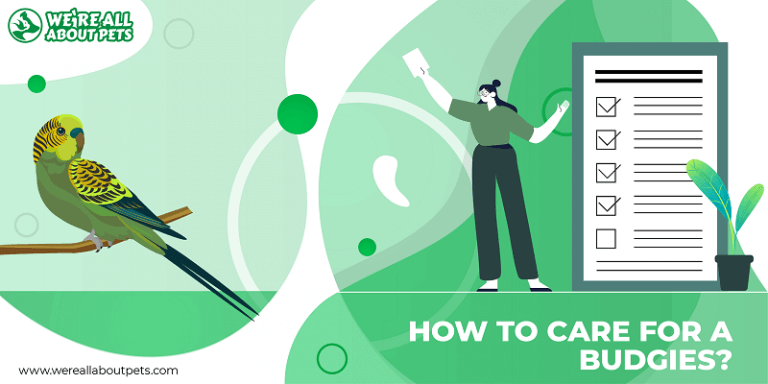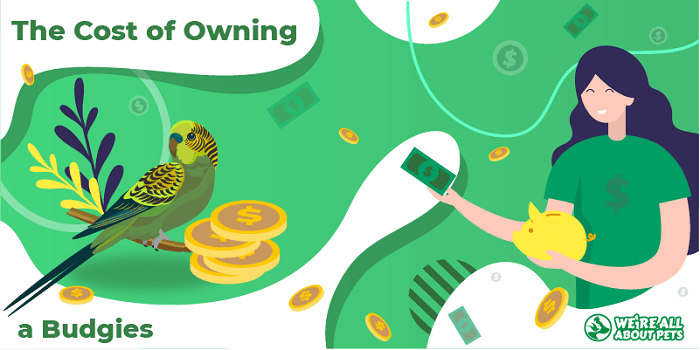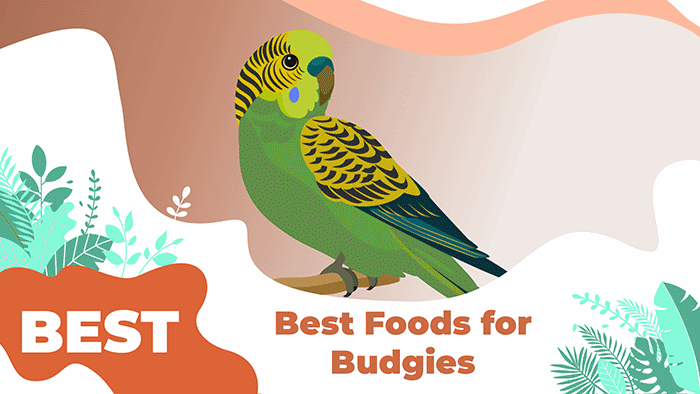Indian Ringneck As A Pet: Personality, Care And Diet
This page contains affiliate links. We may earn money or products from the companies mentioned in this post through our independently chosen links, which earn us a commission. Learn More
Indian ringneck parakeets are beautifully brightly coloured, intelligent and social birds. As with all parakeets, they can also be referred to as parrots, but their long tail-feathers and medium-size set them in the parakeet group.
They have a reputation for being hard to train and sometimes nippy, but with careful attention, these sociable birds can become loving pets. You can read more about their history and distribution here.
Personality
Indian ringneck parakeets have been kept in captivity for thousands of years. In the last century they have been bred enthusiastically and are now very popular pets. They are fairly small in size, and with various colour mutations and lovely markings, it is easy to see why they are so popular.
Indian ringnecks are intelligent, and need regular handling and training else they can become bored and destructive. They also have a reputation for being nippy, but with regular handling this can easily be avoided. They are not known for being very affectionate, but can form excellent bonds with their owners.
During adolescence, around 4-12 months, they can go through a period called ‘bluffing’. This is a phase in which the parakeet’s hormones are surging, which can lead to an increase in aggressive tendencies. During this phase, the young birds can show biting, hissing and other anti-social interactions. This can be a very difficult stage to navigate: it is tempting to reduce contact with the bird, but this can actually make matters worse as they will then become more difficult to handle.
Key tips to getting through the bluffing phase include: keep handling and bonding with your ringneck, encourage good behaviours and keep in mind it will only be temporary!
In the wild, ringnecks live in large groups and so are very social birds and appreciate plenty of interaction. If handled well and frequently, and provided plenty of interaction and stimulation, they can make good-natured and sweet pets.
Speech And Tricks
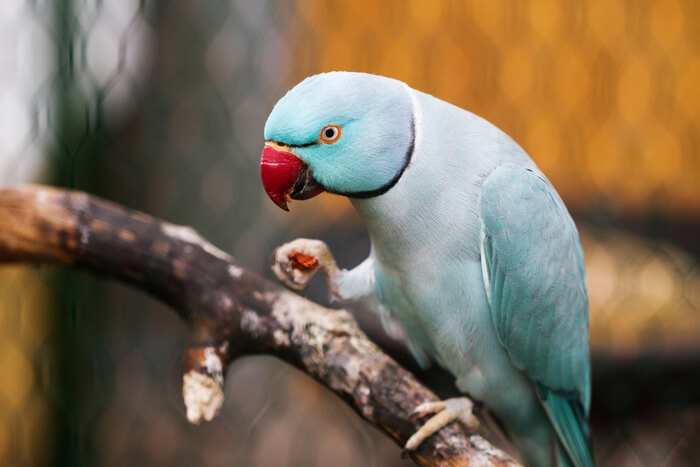
The Indian ringneck parakeet is well-known for its fantastic affinity for learning words. They usually start to speak around a year of age or just before and have been known to learn up to two hundred words! Extremely chatty in many circumstances, they can be very loud! They are highly intelligent and are quick to learn, so are excellent pets if you want to teach some bird tricks.
Care
Ringneck parakeets are of medium size, but require large cage space as they are active and intelligent so need plenty of space to exercise and play.
Their long tails also need space to sit comfortably! Bar spacing needs to be 1/2inch to 5/8 inch so that they cannot get stuck or escape out. The cage floor should be cleaned every few weeks. Here are some examples of cages.
Providing perches and plenty of toys will ensure good mental and physical stimulation, making anti-social behaviour and other problem behaviours less likely.
Indian ringneck parakeets have well-developed jaw muscles for their size and love to gnaw, so lots of safe chewable toys are a must, else they may become destructive. These toys and perches must be cleaned weekly.
Parakeets require lots of exercise to stay healthy. Aim to let your ringneck out of their cage into a safe space to fly and enjoy themselves for at least three hours a day. Most birds will also highly enjoy a bath in a dish of water.
What Do Indian Ringneck Parrots Eat
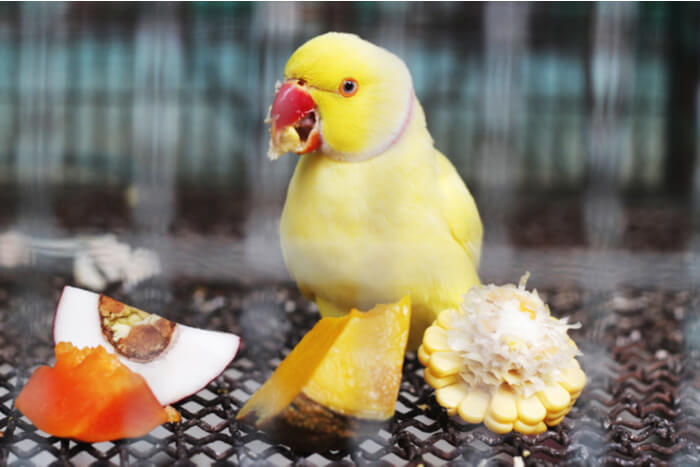
In the wild, ringneck parakeets’ diet consists of fruits, berries, vegetables and seeds.
In order to provide a nutritionally balanced diet, a complete pellet diet is commonly recommended. Leafy greens and vegetables are also required for good nutrient balance, and your parakeet will appreciate some variety with fresh fruit, vegetables and seeds on offer. Grains, rice and beans can also be given in small quantities.
Some parakeets can be fussy about pellets and pick them out of their food. Keep offering them, and don’t provide too much fruit and vegetable so that they are hungry enough to try them. Aim for ¼ cup of pellets with ¼ cup of fruit or vegetable, increasing the quantities if needed.
Remove uneaten food daily, as well as clean food and water bowls.
How Long do Indian Ringneck Live?
In avg. Indian Ringneck parrots have been reported to live for around 20-30 years. Some documentation points that they can potentially live up to 50 years,
How Much Are Indian Ringneck?
The price of an Indian Ringneck parrot typically ranges from $300 to $600, though you might pay up to $7500 depending on the calcification and the organization of the bird
Frequently Asked Questions
How much do Indian ringneck parakeets cost?
Indian ringnecks are a fairly common species of pet bird in the U.S. and so are fairly easy to find. You can either adopt/rescue, or purchase from a breeder. You can expect to pay anything between $300-$700. If you choose to rescue or adopt, make sure you use a reputable organisation such as Rescue Parrots.
If you choose a breeder, check that they have experience in raising and breeding parakeets and are knowledgeable about the breed. Either way, you want to make sure the bird you choose is healthy. Always check for bright eyes, well maintained plumage and a full crop.
Are Indian Ringneck parrots good pets?
Indian ringnecks are charming, amusing and highly decorative birds. With good handling and the correct care, they can make sociable and talkative companions. However, if they are not kept in the correct conditions, or are not used to being handled, they do have a reputation for being difficult, so should not be taken on lightly.
Are Indian Ringnecks good for beginners?
As medium sized birds, with fairly standard requirements, they are sometimes taken on as a beginner’s pet. However, as with all pet birds, even the basic standards are quite involved, so anyone taking on a pet bird must do their research. Ringnecks are known to become very difficult if not handled correctly, and so may be more suited to an experienced handler.
Their adolescent ‘bluffing’ period can be a testing time, so some history with navigating this tricky phase may be beneficial.
Do all Indian Ringnecks talk?
This breed of parakeet is well known for its abilities with speech, and overwhelmingly do talk. They usually begin talking around 8 months to 1 year old. They are excellent at whistling, and if they develop this skill they may learn less words, as they enjoy whistling too much to change! Indian ringnecks are beautifully bright birds, chatty and sociable.
If you’ve decided they might be the pet for you – enjoy! Now all you need to do is choose the perfect parakeet name!

